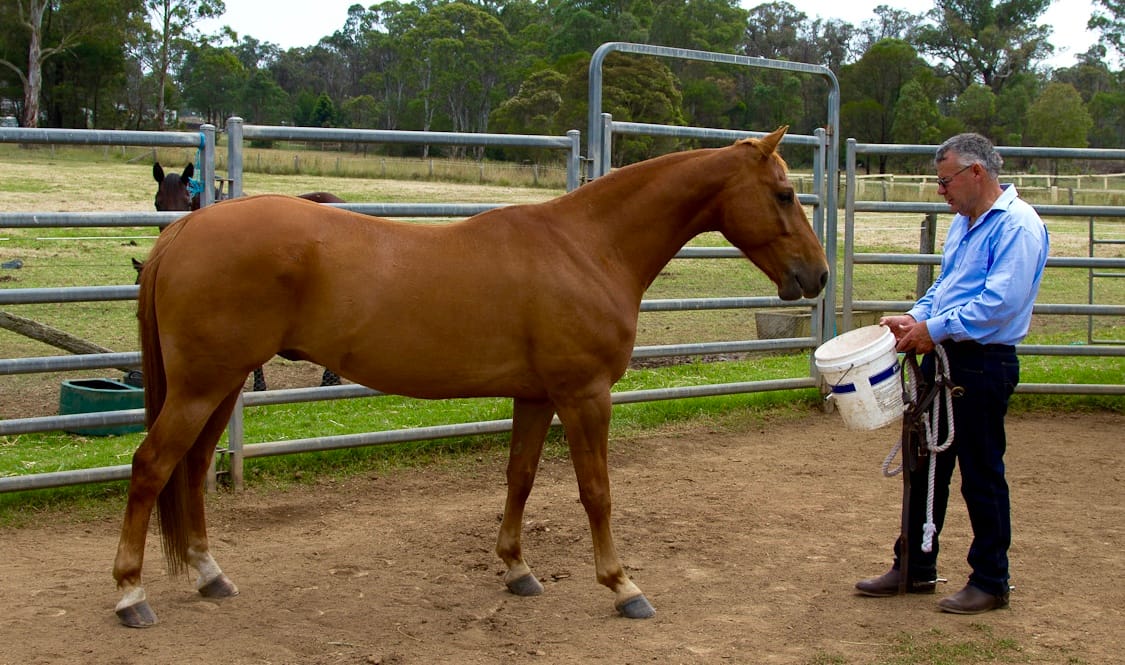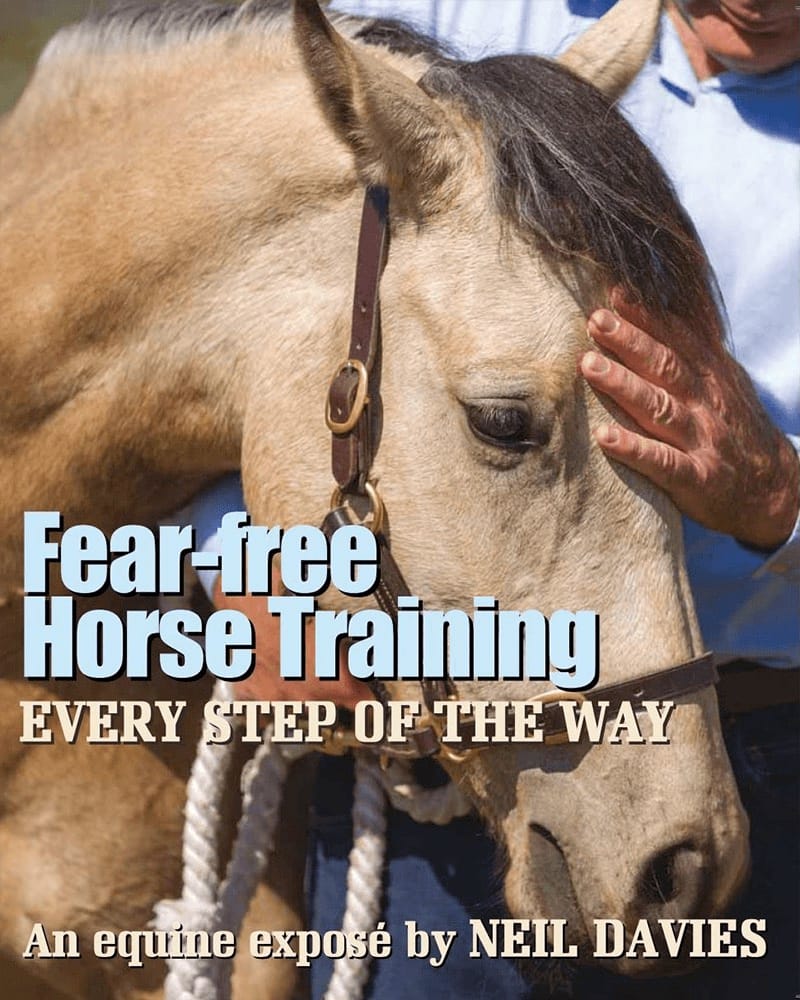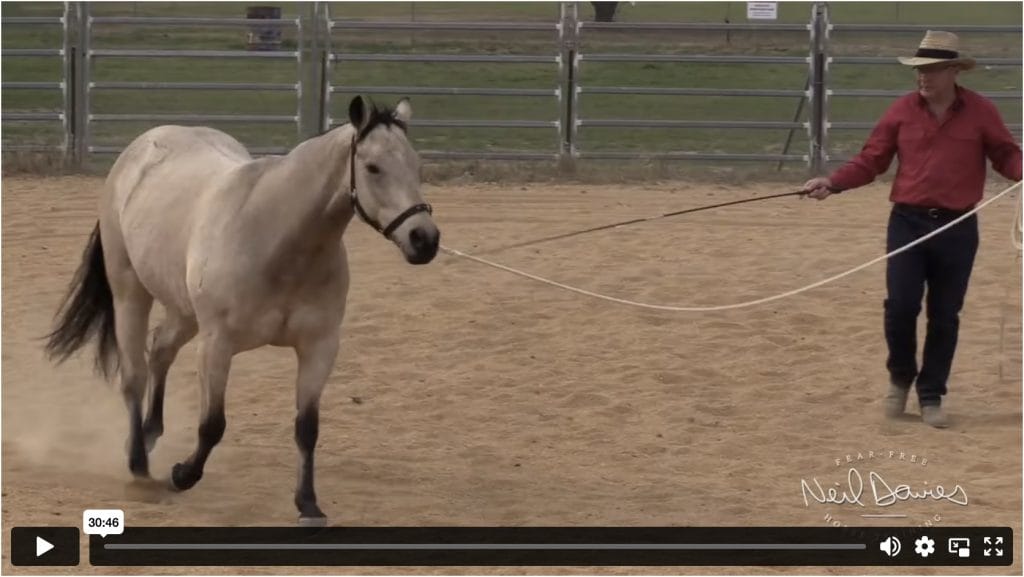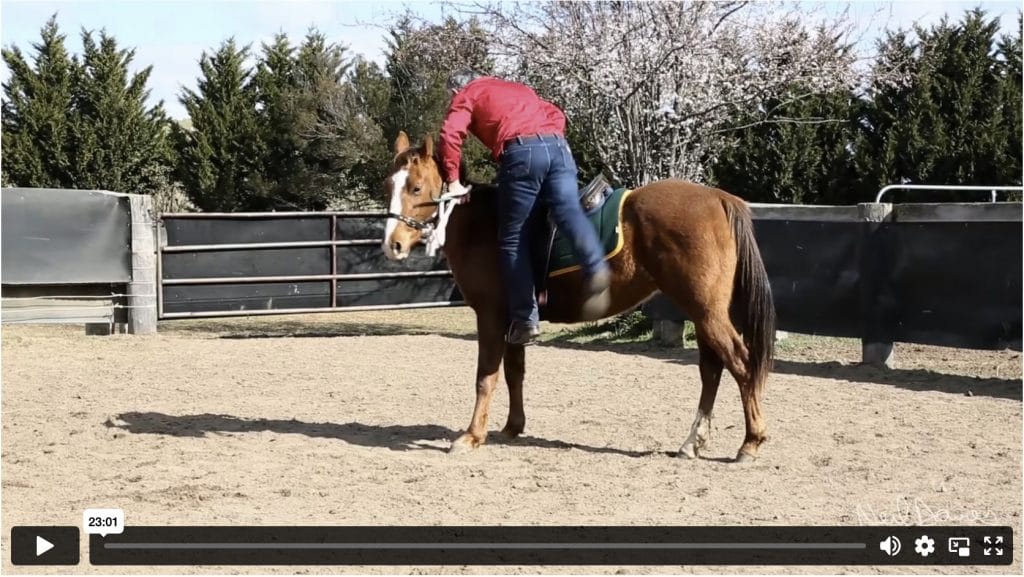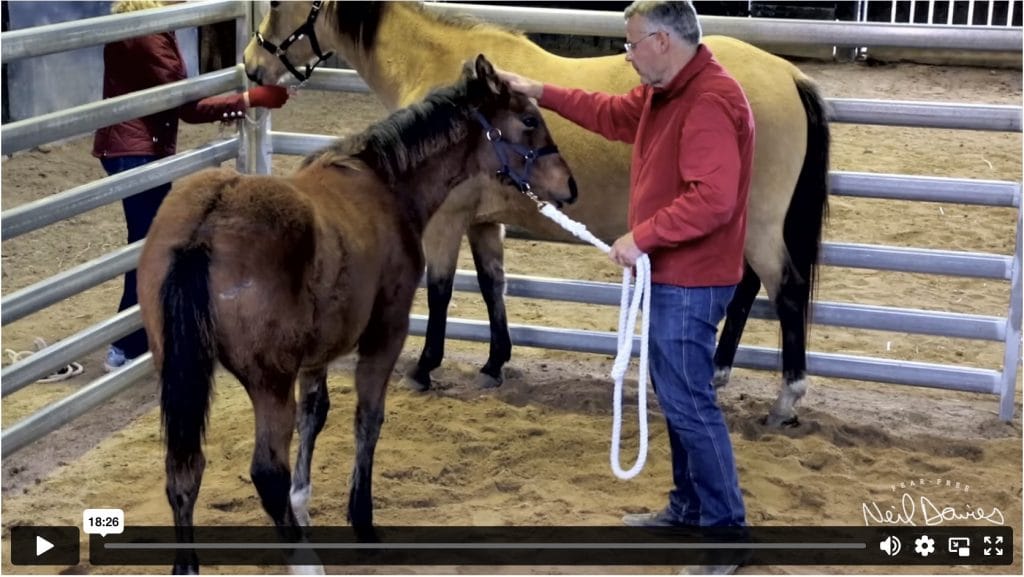Fear is the biggest factor to overcome when you train horses.
It’s very difficult to teach any horse anything at all when he’s frightened.
When a horse is frightened and confused, he’ll do whatever it takes to try and escape.
This may include kicking, striking, biting, pulling back, rushing away or bucking.
These behaviours are undesirable from our point of view but that doesn’t mean they’re wrong or disrespectful.
From a horse’s point of view, these behaviours simply relieve pressure and make a frightening situation less fearful.
Many trainers would have you believe that the biggest problems to overcome in horse training are ‘establishing your place in the horse herd’ and ‘gaining your horse’s respect’.
They misinterpret biting, kicking, bucking, rearing and rushing away by saying that the horse is challenging you.
They say you must be ‘higher in the pecking order’ so you can ‘dominate the horse and ‘gain his respect’.
Biting, kicking, bucking, rearing and rushing away are a horse’s natural means of defence when he finds himself in a frightening situation.
These behaviours start when a horse is terrified and trying to save his life.
Trainers say you must chase such a horse and apply even more pressure until he ‘gives up’.
With this treatment, most horses become so mentally and physically fatigued from being chased and harassed that they eventually stand.
Then the trainer says that the horse ‘shows respect’ or words to that effect.
This theory assumes that your horse knows he’s not supposed to kick, bite, rear or buck, even when he’s terrified.
Take some time to think about this.
How does your horse know he’s not supposed to do these things?
How does any horse know what you think is right or wrong?
Horses have no idea what we may think is right or wrong.
Horses merely do whatever they see as being easiest in the situation that’s presented to them.
You must remember that horses don’t automatically know what you want them to do when you teach something new.
A foal doesn’t come into the yard thinking ‘Oh good. I’m being taught to lead today’.
A young horse doesn’t think ‘It must be about time for me to be saddled and ridden’.
Even an experienced horse doesn’t think, ‘I’ve learned flying changes,
I guess canter pirouettes are next’.
Horses don’t automatically understand; it’s up to us to teach them in every situation.
When a horse is confident and relaxed, teaching him is easy.
A confident, relaxed horse always looks for ways to make life easy for himself.
In every situation, he’ll try his best to relieve pressure.
However, if the trainer doesn’t relieve the pressure at the appropriate time, the horse will be confused.
If he sees no way to relieve pressure, the horse will try other options.
Perhaps he’ll pull the reins from the rider’s hands, or rear, or kick up, or buck.
When the horse does these things, the rider stops pulling or kicking for a few seconds.
From the horse’s point of view, his actions relieve the pressure and so he learns to pull, rear, kick up or buck.
Such a horse is taught to relieve pressure in a different way than a so-called ‘well behaved’ horse, but that doesn’t mean he’s ‘bad’ or ‘disrespectful’.
Some horses learn to lay their ears back and chase people away.
This begins when a horse is confused and annoyed by inconsistent handling.
When the horse lays his ears back and chases the source of his annoyance – the trainer – the pressure is relieved when the trainer moves backwards or runs away.
And so, the horse is taught to lay his ears back and chase people.
This is simply learned behaviour and has nothing to do with respect, domination, leadership or the horse herd.
Please remember, your horse always does whatever he sees as being easiest in every situation.
To say that a horse lacks respect is just an excuse to chase, harass and use excessive force.
Forget about respect.
It’s got nothing to do with horse training.

